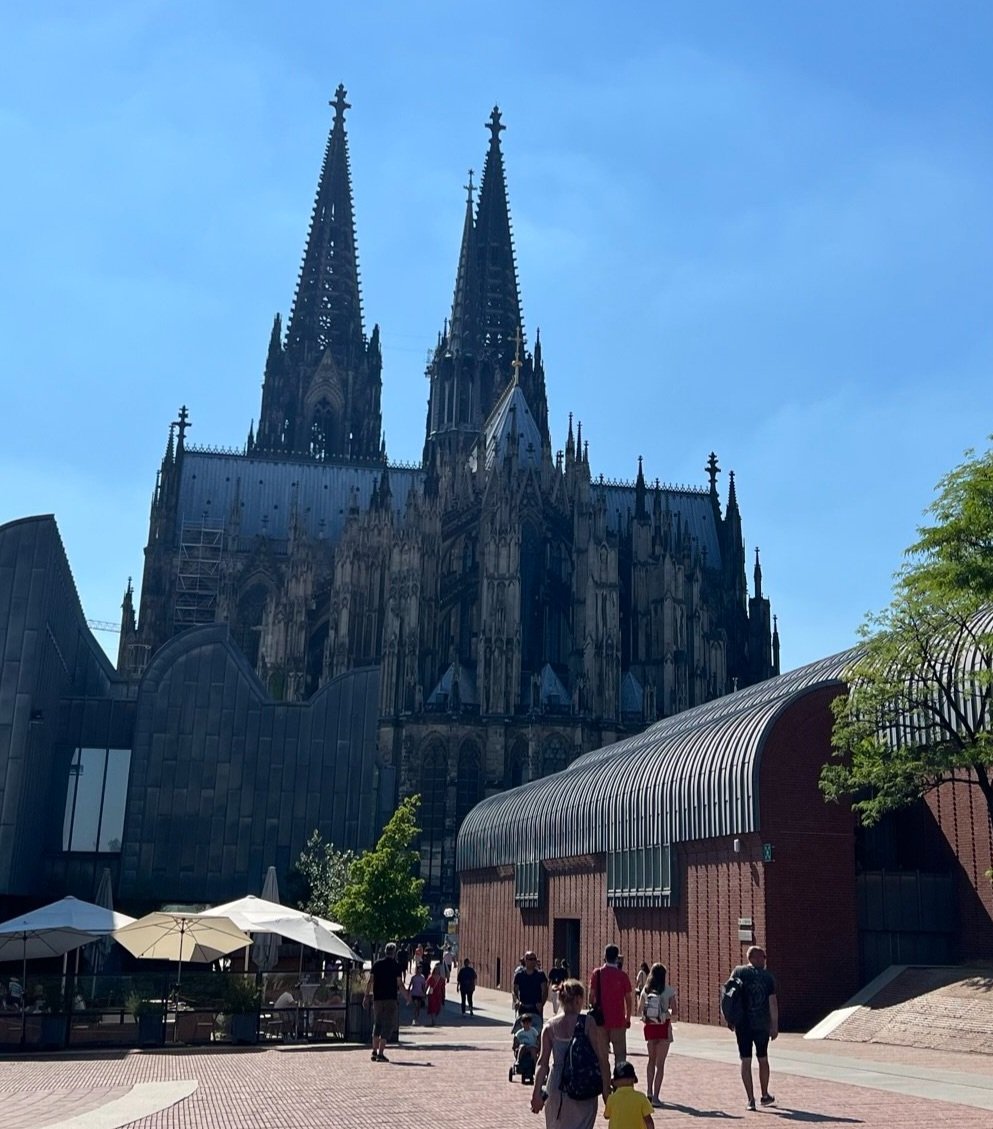Dodging Tourists in Cologne – The Cathedral
“Why didn’t they put in an elevator when this place was built?” - American Tourist
Cologne is an incredible city that used to be one of the wealthiest in Europe. As such, it also has the cathedral and historic downtown area consistent with this rich history. Where there is a cathedral, a navigable river and beer there are also plenty of tourists. In the case of Cologne, many come on the huge riverboats from Viking and other companies.
The tourists are easy to spot in Cologne. They are generally older, walk around with heads turned skyward and take the easiest path everywhere. When they are in a group from the boats, they also have listening devices to hear the constant drone of the tour guide. My approach to visiting these places is a bit different. As a single guy traveling by myself or with a colleague, I can go where I want, when I want and stay as long as I want. This is perhaps the ultimate freedom while traveling.
The cathedral in Cologne is the central attraction. Less than a block from the train station and three blocks from the Rhine, the cathedral is unlike any I have seen before. The flying buttresses and the sheer size of the building are mind blowing. The site was built on an old Roman place of worship, with many of the Roman works still visible in the lower parts of the building. The spires on the cathedral are 157 meters in height (515 feet to Americans or 1.7 American football fields). Fortunately, there is a tour route to the top. Unfortunately, I am a bit afraid of heights. Not that I let that stop me…sort of.
The route to the top involves a spiral staircase reminiscent of a 400-foot corkscrew. It even turns the same direction. The center is a long pillar with stairs radiating outward. The staircase is about the width of two Europeans or 1.5 Americans. And the way up is the same as the way down. You can see where this is going. Toward the top there is an open-air square room with modern, metal stairs in the middle that are firm, but not as firm as stone. At this point, looking down over Cologne and realizing I was well above the cranes restoring other parts of the building, that fear of heights finally took hold. I scampered down the metals stairs, never making it to the highest point. Somehow, the 800-year old stairs felt better than the 30-year old stairs made with modern materials. I had good company at the base of the metal stairs, with many other pasty-white faces waiting for others to come down the last section.
Going down it is hard not to imagine a bouncy ball bouncing from wall to wall spiraling down further and further toward the lowest floors to the cathedral. I can only imagine the route it would take, moving ever faster as it bounced its way down. But perhaps this is just me. The physics of this would be fascinating, but also involve a lot of math that is well beyond my level of understanding.
An interesting note is how prescient the builders were, understanding that we like to stay to the right side of the road and path. With stairs spiraling outward, the surface area of each step is greater at the outside than the inside. The builders having previously anticipated that we would all drive on the right side of the road hundreds of years from when the staircase was built, assumed that everyone would stay right. Those traveling up needing less surface area for the ball of the foot, and those traveling down requiring a wider space to account for the heal. What amazing engineering. If only tourists today were that smart.
The ultimate freakout, beyond going down looking out the windows, is passing on the inside while those going up cling to the railing on the outer edge. This means going to the inside where there is less area for feet and no handrail. One slip and you would quickly discover why Germany doesn’t have such a litigious culture as the United States (and the value of universal healthcare).
The inside of the cathedral is as epic as the outside. If you didn’t believe in God prior to entering the building, the construction is enough to give you second thoughts. The stain glass windows are ornate and intricately detailed. Every part of the building serves a purpose through its largess and finite points surrounding the person. It is said that the cathedral was intended to show the glory of God, and the smallness of each human. Walking through a building made for giants is certainly a way to understand this idea.
The treasury of the cathedral is, from an historic perspective, among the most interesting parts. The treasury contains artifacts from the Roman times to the recent. The shrine to the magi supposedly has the skulls of the magi, complete with crowns, inside. This makes them some of the most important artifacts in Christianity. One can only aspire to eventually have your skull stored in a trunk with a gold crown for centuries.
For me, the cathedral raises more questions than it answers. These questions range from the simple: how on earth do you dust this place? To the more ethereal: where does power come from? Like all places of worship, it is a place of reflection on life, meaning and purpose. And on some serious dust bunnies and rubber balls.
Cathedral in Cologne
